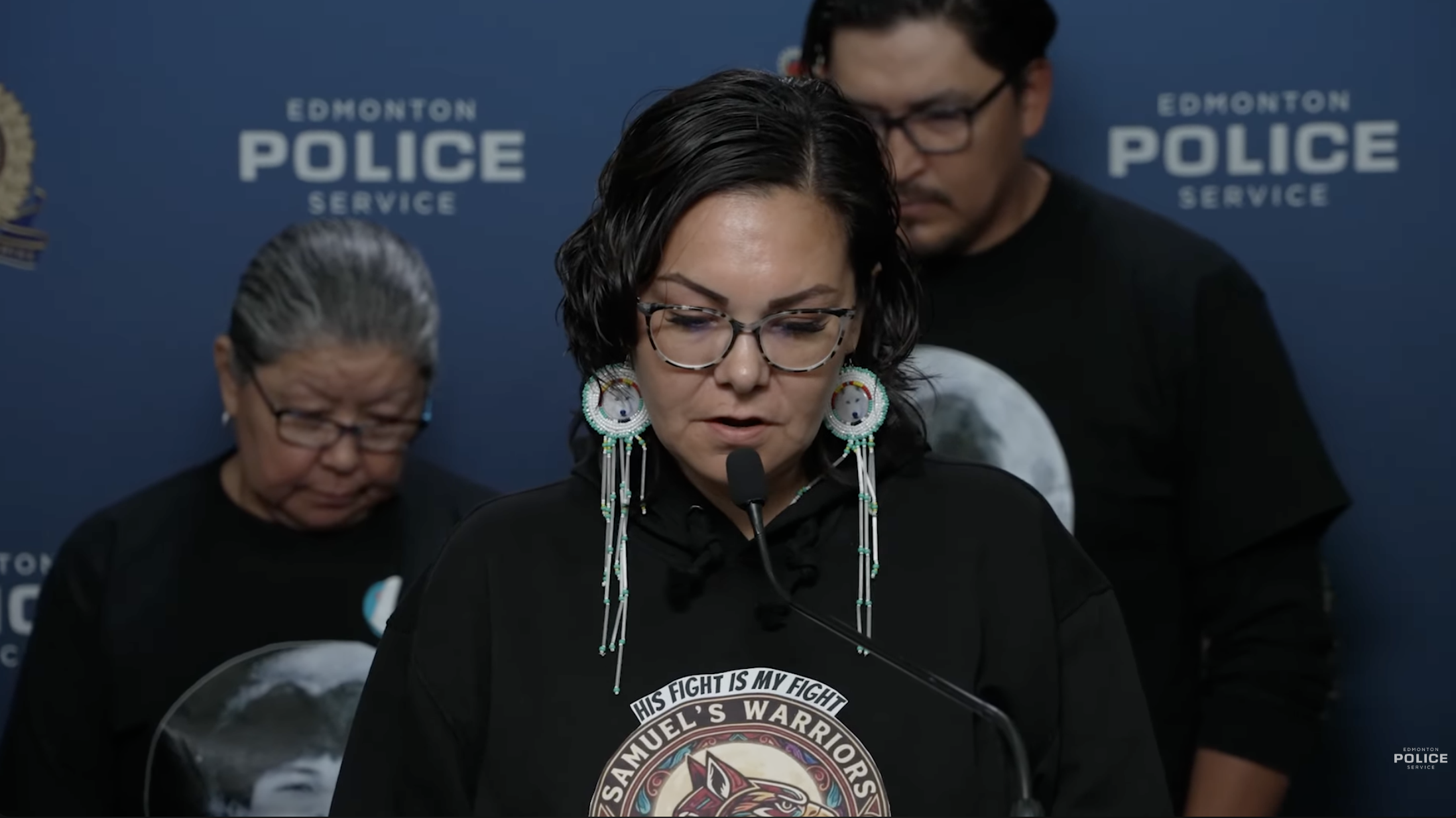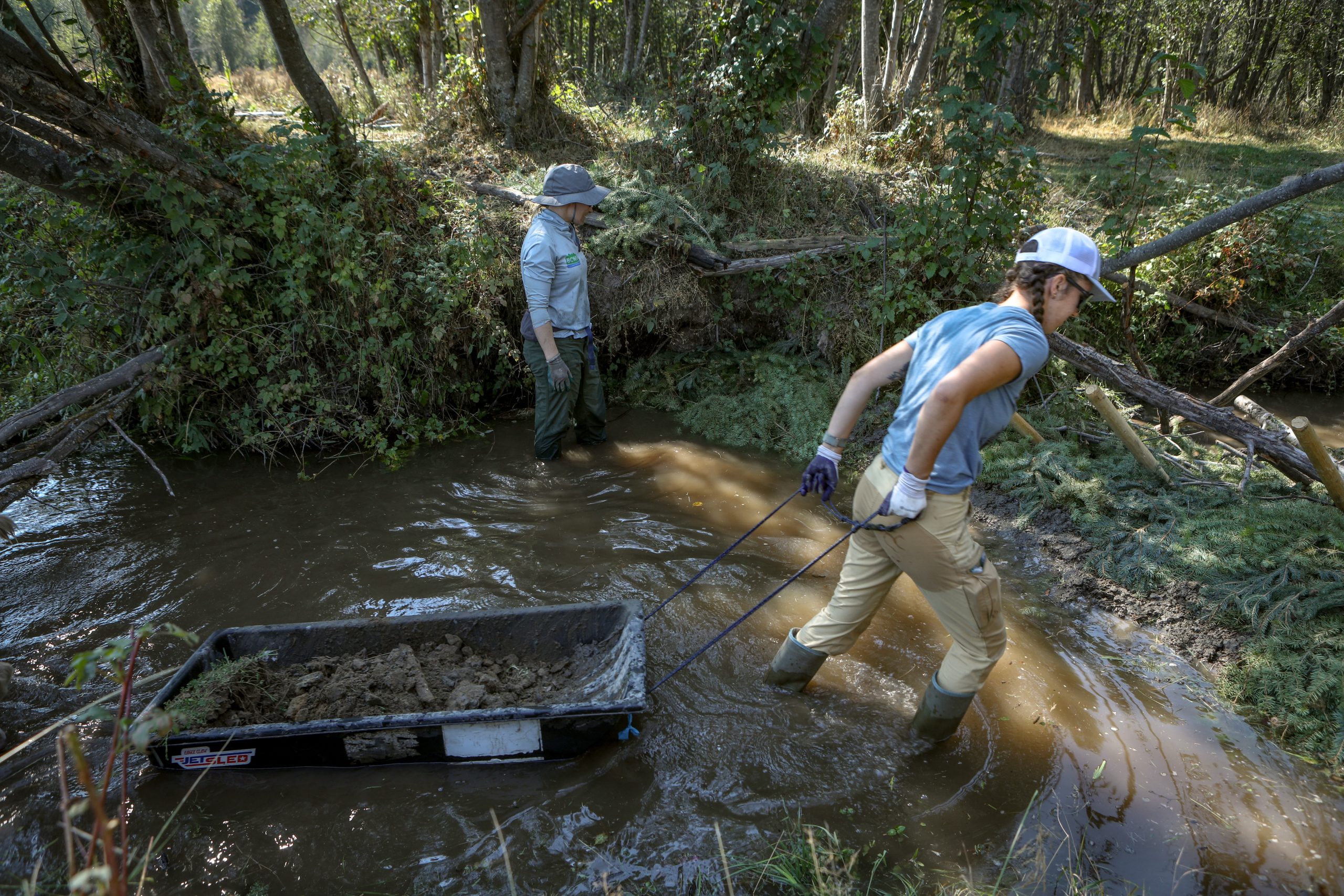‘So beautiful to witness’: Syilx Language House cohort showcases nsyilxcən knowledge at virtual event
The first-year class of more than a dozen people each spoke entirely in their Indigenous language during a Zoom presentation Wednesday


Students in the Syilx Language House’s first-year nsyilxcən fluency cohort gave oral presentations entirely in nsyilxcən to a group of more than 40 virtual observers on Zoom Wednesday.
The cohort consisted of more than a dozen syilx people from different age groups and parts of the Nation’s territory, including in “Washington,” who are all working towards fluency as part of a larger effort to reawaken nsyilxcən.
The language spoken by syilx Okanagan people is considered “critically endangered” according to the Syilx Language House, with about a dozen highly fluent Elders still speaking the language.
Sʔímlaʔxʷ Michele Johnson, the executive director of the Syilx Language House, said that the students in the cohort have all studied the first book of the nsyilxcən Curriculum, developed by the Salish School of Spokane and The Paul Creek Language Association.
During the event, the language learners were met with encouragement from those who tuned in, with one person calling the presentations “music to my ears.”
The students are 100 hours into their language journey, and by the end of the program, they will have learned 440 hours worth of immersion.
“This is a momentous day. I’m always super proud and excited and nervous,” said Johnson.
“It’s a very exciting time. It’s also a very vulnerable time, meaning we give ourselves permission to make all the mistakes and pronounce things as beginner learners pronounce things.”
Each student’s presentation lasted four to six minutes during the virtual event, where they introduced themselves and shared their locations, grandparents’ names, and other personal tidbits of information.
Johnson reminded students to refrain from speaking any English once their presentation began, as they would lose marks for every English word spoken.
Students expressed their fluency efficiency — they did not read off of a script, and each had a sheet of paper riddled with blank phrases with only one letter to indicate a word.
The audience flooded the comment section with praise and joy as the presentations rolled out.
In addition to the work done by the Language House, there are several similar initiatives throughout the syilx Okanagan Nation dedicated to nsyilxcən revitalization — the University of British Columbia Okanagan (UBCO) offers a bachelor’s of nsyilxcən language fluency degree, while Kelowna Museums offers introductory nsyilxcən courses for all.
“This is so beautiful to witness. The very rebirth of our language,” wrote one person. “Takes a lot of courage to speak in front of so many witnesses and do it so well.”
“It’s emotional for the ways in which the words are so eloquently spoken today,” wrote another.
The teachers also expressed joy for each student, with Johnson stating that “our ancestors are proud right now” following a presentation. Some students got emotional as they spoke, and language learners were commended by their teachers.
“Wasn’t that neat to hear the pronunciation of the language by such a youthful voice? We’re used to hearing the Elder recordings and hearing ourselves — adult learners — but a naturally speaking youthful voice saying the words like it’s no big deal, as though it’s not a critically endangered language,” Johnson said following a presentation.
She said she’s excited to see the students thrive in the subsequent books in the Salish School’s nsyilxcən Curriculum Project, and she thanked her staff for creating a safe and supportive space for the students.
“Really, it’s made possible by the curriculum. We can’t speak highly enough of the Salish School Curriculum,” she said.
“They created this pathway that we can all follow, this safe, achievable and measurable journey.”
Author
Latest Stories
-
‘Bring her home’: How Buffalo Woman was identified as Ashlee Shingoose
The Anishininew mother as been missing since 2022 — now, her family is one step closer to bringing her home as the Province of Manitoba vows to search for her
-
Samuel Bird’s remains found outside ‘Edmonton,’ man charged with murder
Officers say Bryan Farrell, 38, has been charged with second-degree murder and interfering with a body in relation to the teen’s death
-
Book remembers ‘fighting spirit’ of Gino Odjick, hockey’s ‘Algonquin Assassin’
Biography of late Kitigan Zibi Anishinabeg left winger explores Odjick’s legacy as enforcer in the rink — and Youth role model off the ice













